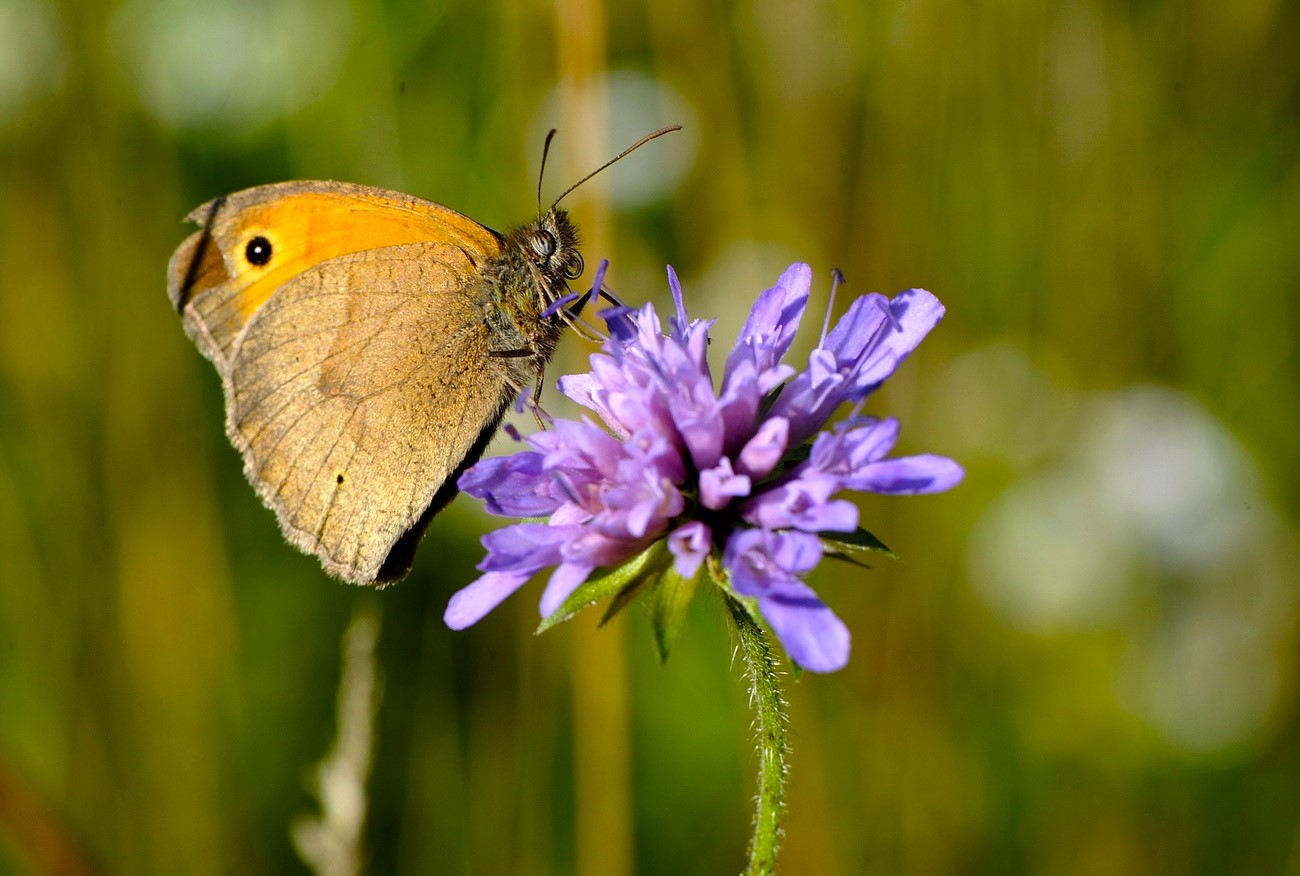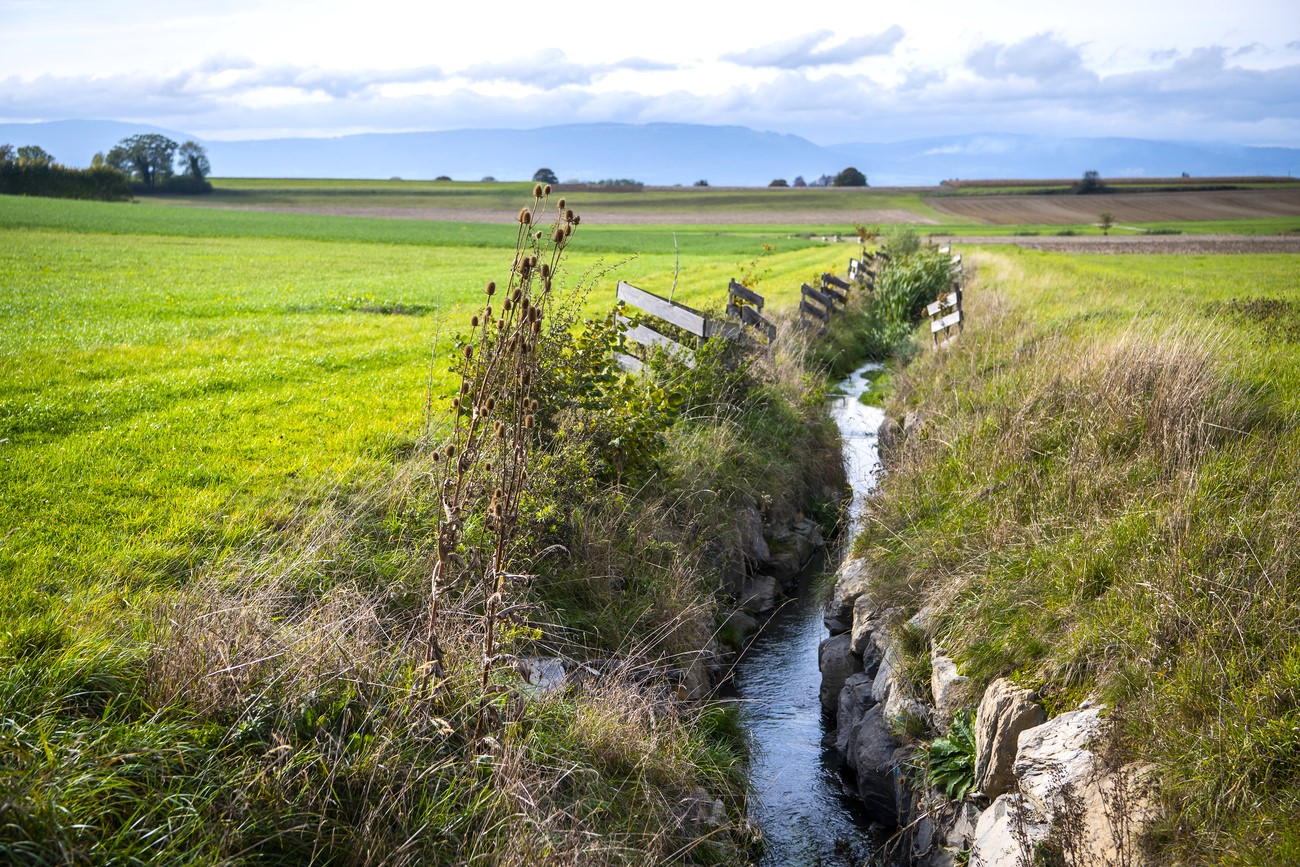
Biodiversity loss in Switzerland in six graphs

The picture of Switzerland as a haven of pristine nature no longer corresponds to reality. Biodiversity loss in the Alpine country is above the world average, and over a third of animal and plant species are endangered. So how can this trend be reversed?
The state of biodiversity in Switzerland is “unsatisfactory” and the situation keeps getting worse. Such is the verdict not of nature conservation organisations but of the Federal Office for the Environment (FOEN). Loss of biological diversity represents “a serious danger to our prosperity and quality of life”, the agency warns.
Almost half of all natural habitats are disappearing. Of the roughly 11,000 animal, plant and fungus species studied in Switzerland (out of a total of some 56,000 known species), 35% are at risk of extinction, according to the Red List drawn up by the International Union for Conservation of Nature (IUCN).
The popular initiative launched by environmental and land protection organisations, including Pro Natura and BirdLife Switzerland, calls for more land and financial resources to be set aside to promote biodiversity in Switzerland. The Swiss people will vote on the issue on September 22, 2024.
Amphibians and reptiles are the classes of vertebrate most at risk. For some groups of organisms such as birds, fish and vascular plants, the threat has intensified over the past ten to 20 years, according to the FOEN report on biodiversity in Switzerland published in 2023. The situation of insects is also deemed “worrying”.
The country’s biodiversity crisis seems even more serious when compared internationally. Despite its potentially high biological wealth, thanks to its geographic location at the heart of Europe and its varied topography, Switzerland has one of the highest percentages of endangered species among Organisation for Economic Co-operation and Development (OECD) nations.
Urban sprawl, the fragmentation of habitats and intensive land use are among the main drivers of biodiversity loss in Switzerland, particularly in the lowlands, according to the FOEN. In mountainous regions, the main culprits are intensive agriculture and water and leisure infrastructures, such as ski facilities.
Nine million inhabitants in a third of Swiss territory
The built-up area of Switzerland has increased by more than 30% in less than 40 years. Between 2009 and 2018, the equivalent of nearly eight football pitches were built on each day.
Building densification is increasing in the places where biodiversity is richest, namely the lowlands, Beat Oertli, a professor at the University of Applied Sciences and Arts Western Switzerland, told Swiss public radio, RTS. “We have nine million inhabitants concentrated in one third of the territory.”
The fact that Switzerland is a small, densely populated nation with a plethora of transport routes helps explain the poor state of biodiversity compared with other countries.
The landscape is increasingly fragmented and the potential living space for species sensitive to human presence is shrinking. Settlements and roads prevent wildlife from moving freely from one area to the next. Animals that need a large territory, such as the lynx, are particularly affected.
Over the past 60 years, the surface area of natural landscape between two human-made barriers, an indicator of land fragmentation, has decreased from 341km2 to 229km2.
Too much nitrogen in the water and soil
At the same time, natural habitats are deteriorating or disappearing. Over the past two centuries, nearly 90% of Switzerland’s peat bo gs, vital ecosystems for biodiversity, have been destroyed.
Other aquatic environments are also under heavy pressure. Lakes and rivers are degrading due to the input of pesticides, fertilisers and other pollutants, warned Cornelia Krug, science policy liaison for the University of Zurich’s Research Priority Programme “Global Change and Biodiversity”, in an opinion article published by SWI swissinfo.ch.
Insect larvae and other small organisms that react sensitively to pesticides are missing in most streams in Switzerland, according to a recent analysis by the Swiss Federal Institute of Aquatic Science and Technology (EAWAG). Only about 20% of waterways are in a near-natural state.
Eutrophication, the process in which water or soil becomes overly enriched with nitrogen and phosphate, is one of the main threats to biodiversity in Switzerland, explains Sarah Pearson Perret, a managing member of the Swiss association Pro Natura. “Many plant species vanish from a given environment when nitrogen levels increase.”

Advance of invasive species reduces biodiversity
Invasive species are the second-biggest cause of the decline in biodiversity in the world, after habitat destruction, the IUCN says. Animals or plants, usually from other continents, can reproduce and spread over vast areas, to the detriment of indigenous species.
In Switzerland, the number of invasive species has increased by around 50% since 1990. Compared to other countries their spread is still at an early stage – which is precisely why early action is needed to prevent them from colonising even larger areas, the FOEN stresses.
Not enough protected areas in Switzerland
Another problem in Switzerland concerns protected areas of national, regional or local scope. These account for about 10% of Swiss territory, compared to an average of 26% in the European Union. Meanwhile, the member states of the United Nations have set themselves the goal of protecting at least 30% of their land and sea areas by 2030.
Over the past decade, Switzerland has made no progress regarding protected areas, the Convention on the Conservation of European Wildlife and Natural Habitats denounced in 2022. According to this body, the Alpine country has done only 1.4% of what it should have to better protect international priority organisms.
Pearson Perret highlights another factor concerning protected areas in Switzerland. “They are very small compared to those found in other countries. As a result, human activities taking place close by often negatively impact their quality.”
How can biodiversity be boosted in Switzerland?
Biodiversity can be restored by rewilding channelled rivers, revitalising peat bogs and generally leaving more space for nature, says Pearson Perret. “In Switzerland, we want everything to be neat and tidy. But simply leaving grass unmown has a big impact on biodiversity.”
For François Turrian, deputy director of BirdLife Switzerland, the challenge is managing to combine agriculture and biodiversity. The example of the lapwing, a bird that had almost disappeared in Switzerland, shows that it is possible to work with the farming community to recreate a habitat for endangered species.
Designating tracts of land to promote biodiversity in agriculture is one effective solution. These now account for 19% of the utilised agricultural area in Switzerland. According to a recent study by Agroscope, the Swiss centre of excellence for agriculture research, these rarely fertilised or mown areas are more effective than organic farming in fostering plant diversity.
But involving farmers, whose commitment to biodiversity is rewarded by state grants is only a first step. Raising awareness is also necessary, according to Sarah Pearson Perret.
However, involving farmers, whose commitment to biodiversity is rewarded by government subsidies, is only a first step. Raising public awareness is also key, Pearson Perret stresses. “People don’t realise that living beings are interconnected. The disappearance of a species, even if it seems useless to us, has an impact on the entire network of living things, and therefore on all of us.”
Edited by Balz Rigendinger. Adapted from Italian by Julia Bassam/ts
More

In compliance with the JTI standards
More: SWI swissinfo.ch certified by the Journalism Trust Initiative
















![The four-metre-long painting "Sonntag der Bergbauern" [Sunday of the Mountain Farmers, 1923-24/26] had to be removed by a crane from the German Chancellery in Berlin for the exhibition in Bern.](https://www.swissinfo.ch/content/wp-content/uploads/sites/13/2025/12/01_Pressebild_KirchnerxKirchner.jpg?ver=a45b19f3)














You can find an overview of ongoing debates with our journalists here . Please join us!
If you want to start a conversation about a topic raised in this article or want to report factual errors, email us at english@swissinfo.ch.